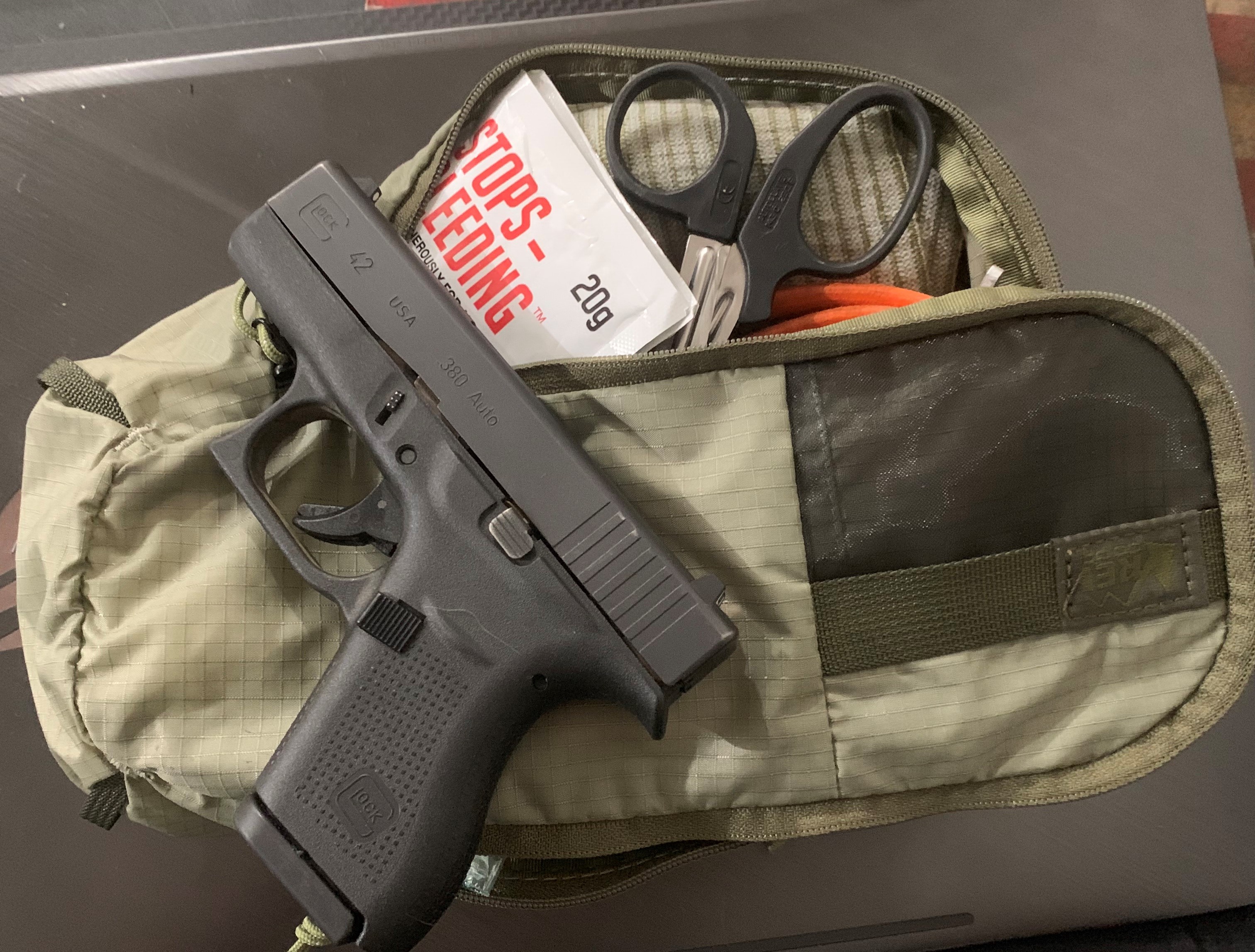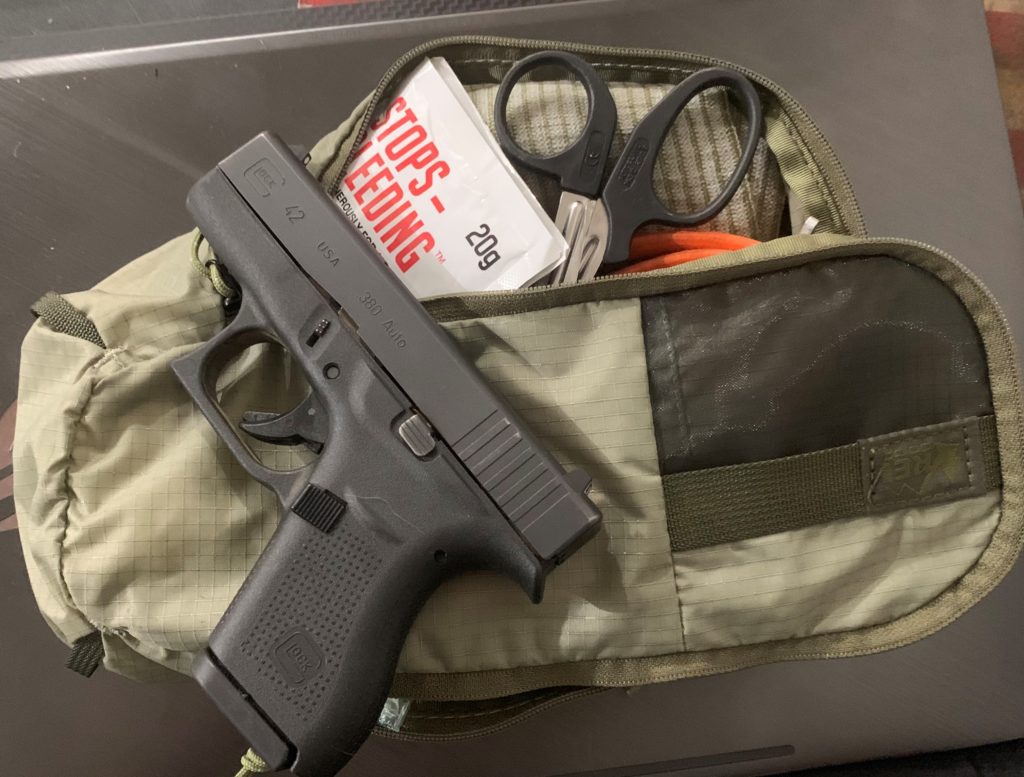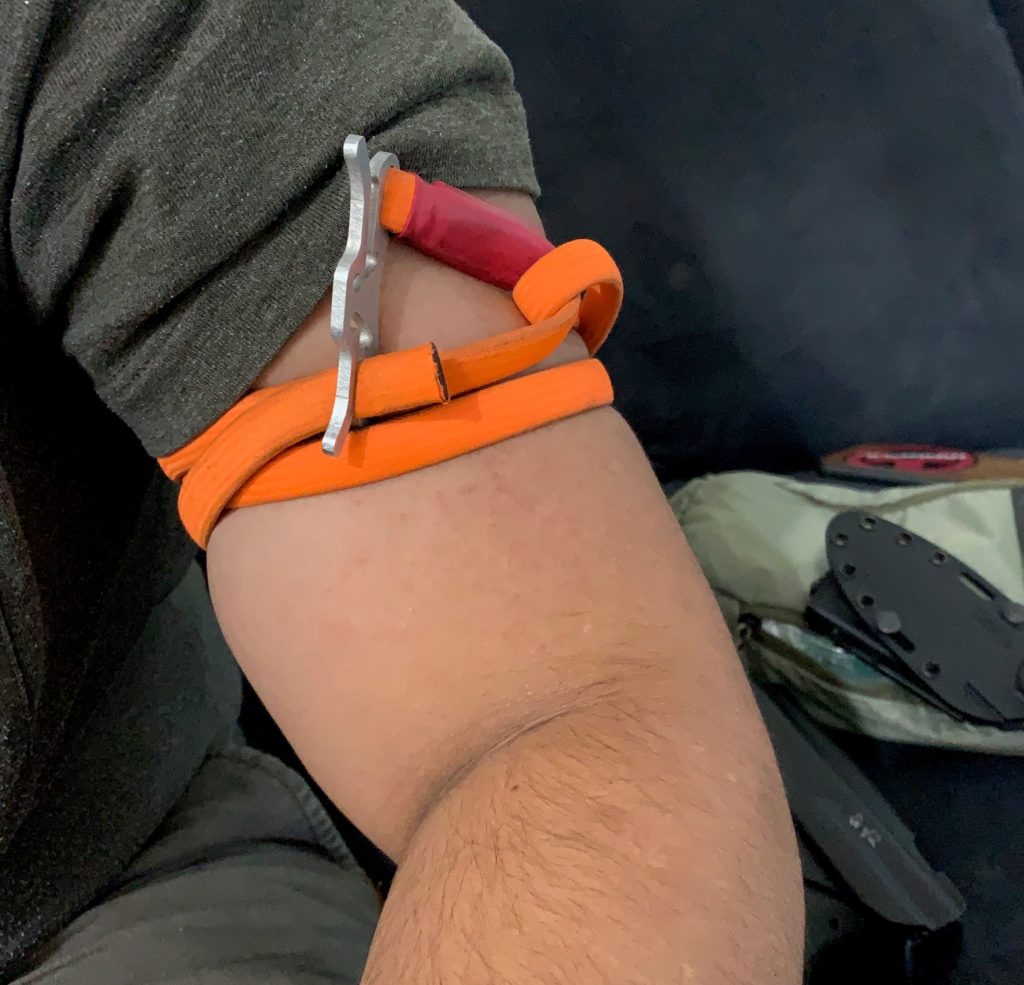
Over the holiday weekend, my wife managed to get hurt once again. As usual, I got out my medical kit with a sigh, attended to her injury, and assessed if we needed a trip to an urgent care clinic, which we didn’t.
Later that night, we joked about the irony; that she managed to hurt herself not at the gun range, not with fireworks, but with a short trip to our apartment community’s pool. Upon further reflection, I realized how often my sparse medical knowledge and simplistic medical supplies have been handy. What I’ve needed and used most hasn’t been tourniquets or chest seals, but things you might find in a store bought basic first aid kit.
What I’ve seen in the community of prepared people I tend to surround myself with has been an emphasis on guns and ammo, or training for tactical shooting. These aren’t unimportant skills, but I would liken them to playing baseball and never learning to field a ball, and focusing on batting to the exclusion of all else. While batting is how to win the game, more of your individual time will be spent in the infield and outfield, and missing those plays will always lead to losing the overall game.

So how can we learn to be healers of men? Does it require expensive training, becoming a medical doctor, or otherwise achieving higher learning in the medical sciences? For more basic techniques and tools, you can turn to online learning. There are a variety of educational articles and videos to get basic secondhand familiarity with relevant tools and skillsets.
There are also many tools available for purchase designed specifically for medical students, and so long as you are pursuing basic medical knowledge, they are useful to a home learner just as well. Some states have started Stop the Bleed courses, offered to the general public in order to increase individual readiness for emergencies, which are at a fraction of the cost of less humble instruction one might otherwise turn to. In addition to this, there are tools which with research on the appropriate use, can be self-taught firsthand, such as applying a tourniquet, suture training kits, aluminum splints, and pressure bandages.

For the price of a few cups of BRCC coffee a month, you can prepare yourself for the everyday emergency. I’ve included a series of links to give you a head start on your own first aid kit below; I’ve personally used and can recommend every product and retailer here:
Basic first aid kit- http://darkangelmedical.com/ouch-pouch-first-aid-kit/
Civilian bleeding control kit- http://darkangelmedical.com/pocket-d-a-r-k-mini-trauma-kit/
Suture kit- http://suturepracticekit.com/
My preferred tourniquet- https://ratsmedical.com/collections/rats-tourniquets/products/rats-gen-2-orange
Alternative windlass tourniquet- https://www.rescue-essentials.com/softt-w-generation-4-tourniquet-black/
By
James Boone